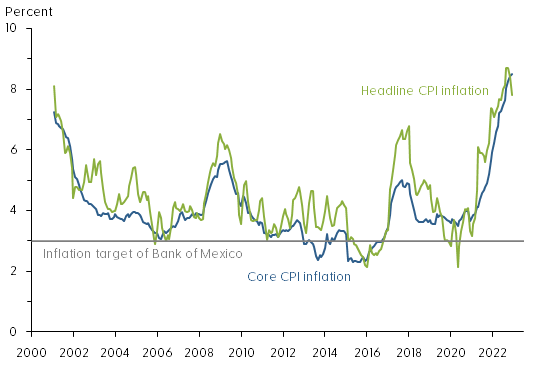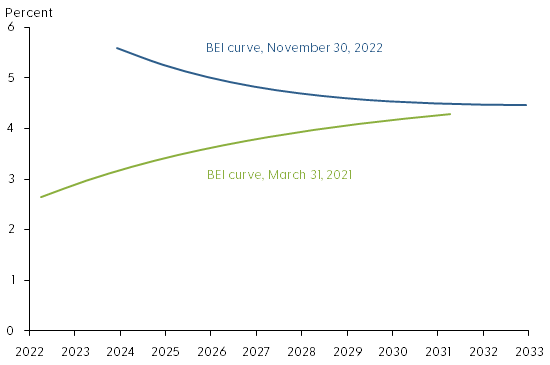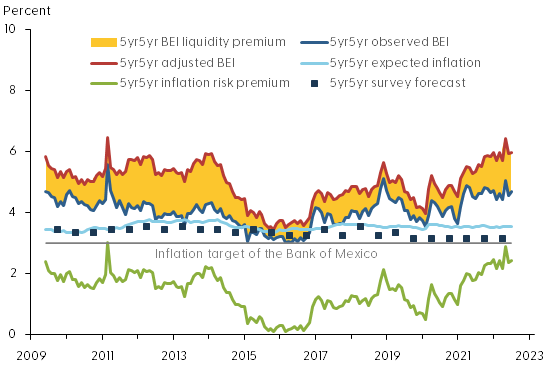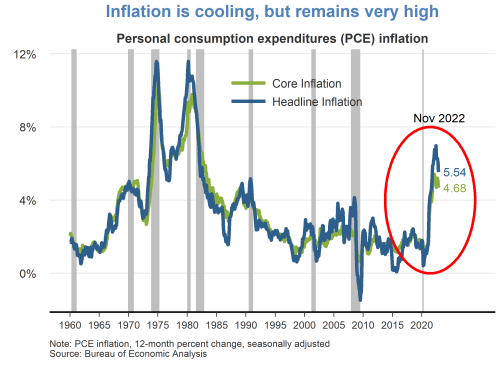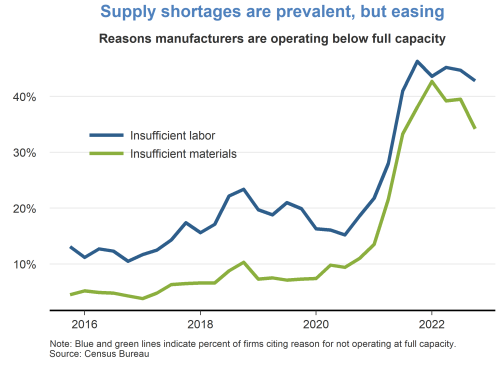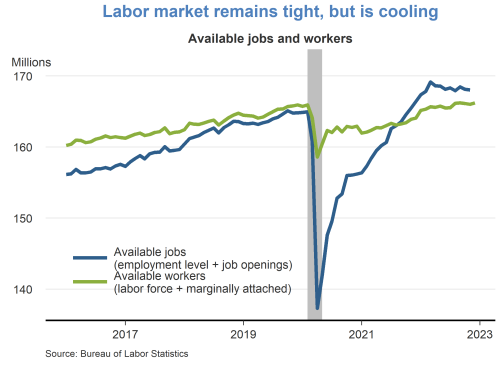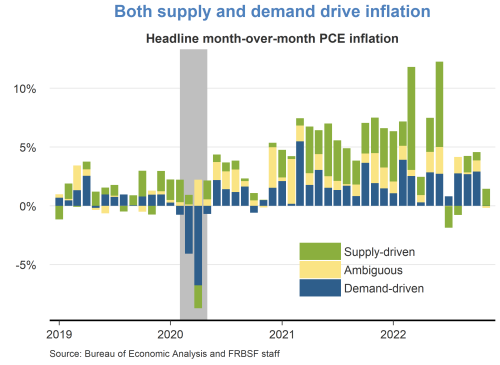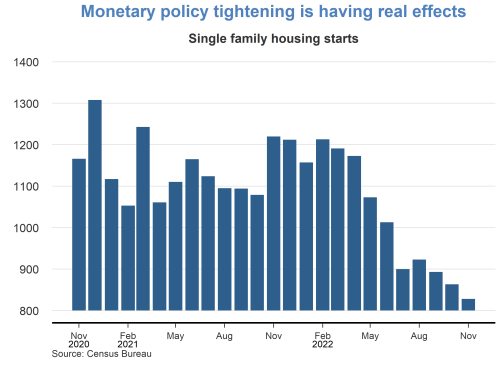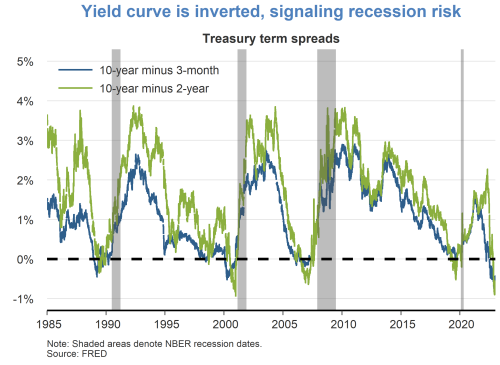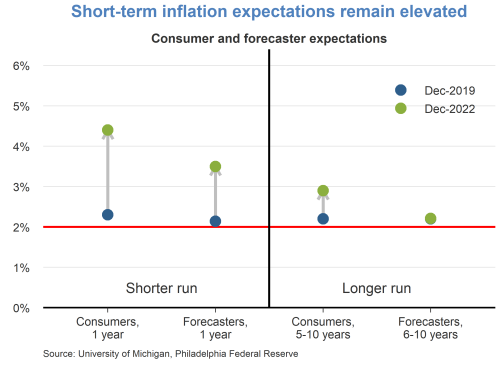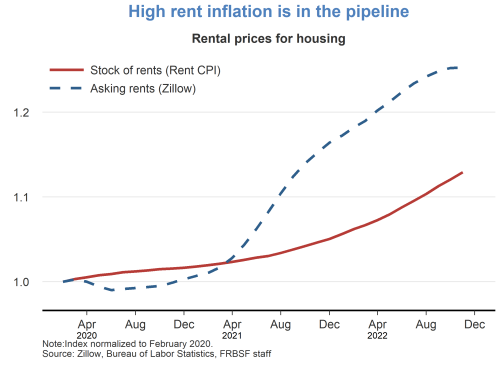The state has both a long history of environmental action and a longstanding dependence on fossil fuels.
[from Inside Climate News, by David Shribman, July 17, 2022]
This is a state where natural gas production reached a record 7.1 trillion cubic feet in 2020, the most of any state outside Texas and more than the energy supplied by the state’s nuclear power plants. It’s a state that has 49 underground gas storage sites, more than any other in the nation. Its coal production ranks behind only Wyoming and West Virginia, and only Wyoming and Texas export more total energy to other parts of the country.
This is also a state where voters will select a new governor and a new senator in November. No state has more vital elections this year; no state has a more complicated and more contentious political culture; and no state provides a better test case for environmental issues and for the future of the climate-change debate.
Welcome to Pennsylvania.
Don’t pack a sweater: the average temperature in the state has risen by 2.8 degrees Fahrenheit since the first Earth Day, in 1970, a bigger increase than the national average.
Don’t breathe deeply: the state’s two major cities, Philadelphia and Pittsburgh, are among the nation’s worst 25 metropolitan areas for annual particulate air pollution.
And don’t fail to note the irony—of a state whose economy and lifestyle are unusually dependent on fossil fuels but whose history is unusually rich in the love of nature and the protection of the environment. It is this collision of economics and history that makes environmental issues so emotional, the debate so bitter, the outcome so vital.
Pennsylvania was the home of John J. Audubon, who cultivated in Americans a love of bird life; Rachel Carson, whose clarion call about the environment jolted the country and shook the Kennedy administration; John Chapman, known to school children nationwide as Johnny Appleseed; J. Horace McFarland, a photographer and conservationist celebrated as the Father of the National Park Service; Harold L. Ickes, the pathfinding Secretary of the Interior during the Franklin D. Roosevelt years who shored up perhaps the least effective and most corrupt arm of government while elevating the standards and practices of the National Park Service; and Jerome Rodale, the publisher whose books gave voice to the ethos of sustainable agriculture. And it was the adopted home of William Penn, the founder of the colony that would bear his name and the author of a conservation edict requiring that 20 percent of the land in the Province of Pennsylvania be preserved as wooded. It is no surprise that Pennsylvania was one of the first states to adopt an Environmental Bill of Rights.
But Pennsylvania also was the setting for environmental milestones of an entirely different type. In Donora, a 1948 smog episode killed 20 people and saddled some 40 percent of the town’s population with respiratory disease. A third of a century later, the partial meltdown of Unit 2 of the Three Mile Island nuclear plant in Dauphin County spewed radioactivity into the Harrisburg area.
The state has had multiple mine disasters and the subsequent contamination of nearby fields and streams. As early as 1883, the explorer and adventure travel writer Willard Glazer wrote that Pittsburgh’s industry was “rendered possible by the coal which abounds in measureless quantity in the immediate neighborhood of the city”—and which contributed to the poisoning of many of the area’s waterways and the despoiling of the air. As late as 1940, 81 percent of the city’s dwellings burned coal. The emissions from the steel mills that helped the country win two world wars and build a robust mass-consumer economy only added to the environmental distress.
This duality is part of, defines all of, Pennsylvania’s natural and political history. It is embedded in the origin story of Pennsylvania and reinforced in contemporary history. In the WPA Guide to Pennsylvania, the writers of the New Deal-era product of the Federal Writers Project spoke in 1940 of how the main plant of the Pittsburgh Plate Glass Company in Ford City, Pennsylvania, “extends for a mile along Third Avenue in a series of long squat units composed of red brick,” and how the state’s Red Hills were exceeded only in Belgium as “the finest farm section in the world.” Precisely three-quarters of a century ago, in his classic 1947 book, Inside U.S.A., the journalist John Gunther wrote, “To a degree the story of Pennsylvania is the story of iron, coal, and steel. Yet of its 26 million acres, almost half is forest!”
A state known for producing metals and fouling the air is also a state known for hunting grouse, pheasant, deer and bear. A state teeming with factory workers is a state loaded with farmers. A state with two major power centers, Philadelphia and Pittsburgh, is a state where elections often are decided in the agricultural “T” between the two. A state known for building belching steel plants is also a state where, this spring, the owners of Fallingwater, the Frank Lloyd Wright masterpiece, announced that they would install solar panels on the iconic house to offset the power used at the site on Bear Run in Fayette County. And when it comes to environmental issues, Pennsylvania is a state where manufacturing and banking interests have enormous influence in the stately Capitol in Harrisburg, and also a state full of climate activists determined to hold industry in check and battle climate change.
“It is particularly difficult in Pennsylvania to come to any agreement on environmental issues because coal and natural gas have countervailing pressure against attempts to deal with climate change,” said Joel A. Tarr, a Carnegie Mellon University historian who studies the effect of technology on the urban environment. “When you tell people that we have a problem with air quality here, their response is that it used to be much worse. This is a place where we won’t have a water-quality solution until we have a cholera epidemic and we won’t address climate change until we have a major catastrophe that brings it home to Pennsylvania.”
Not that there haven’t been efforts. “A generalized good always takes a back seat to a specific interest,” Gov. Tom Wolf, a Democrat, told me in an interview for this article. “We all benefit from a healthy environment, but there are specific interests that are specifically harmed if we do the right thing. Those specific interests have a lot of power in places like Harrisburg.”
The frequent result of these countervailing impulses and competing interests: paralysis on environmental matters, even as the latest United Nations report, published in April, warned that the world was on a path to a rate of global warming more than double the 2.7-degrees Fahrenheit set as the preferred global goal in 2015 in Paris.
U.N. Secretary General António Guterres warned that the result would be “unprecedented heatwaves, terrifying storms, widespread water shortages and the extinction of a million species of plants and animals,” adding, “This is not fiction or exaggeration. It is what science tells us will result from our current energy policies.”
A City (and State) in Crisis
As man proceeds toward his announced goal of the conquest of nature, he has written a depressing record of destruction, directed not only against the earth he inhabits but against the life that shares it with him.
— Rachel Carson, in Silent Spring
In many ways, Pittsburgh—once smoky, still gritty, now proud of its “eds-and-meds” economy, its edgy youth culture and yeasty locavore restaurant scene—stands as a symbol of Pennsylvania’s environmental and climate crisis.
In the past half century, the city’s average temperature has risen by 2.8 degrees, according to figures compiled by Climate Central—a jarring result for a city where the local political grandees like to emphasize how the area has moved beyond its heavy-manufacturing past. Even with the dramatic decline in the steel industry, Pittsburgh remains the 10th worst city in the country in terms of the presence of short-term particulate matter, and the Breathe Meter indicator that monitors the area’s air has found that 88.5 percent of metro areas in the country have cleaner air. Moreover, a study by Community Partners in Asthma Care found that the rate of asthma in Pittsburgh-area school children is nearly three times the national average.
For generations, no essay on the environment of Pennsylvania was complete without citing Charles Dickens’ characterization of mid-19th century Pittsburgh as “hell with the lid lifted,” or Lincoln Steffens’ complaint about the city’s “smoky gloom” and the “volcanic light upon the cloud of mist and smoke” that appeared with the periodic opening of the blast furnaces. When my wife and I bought a house in Pittsburgh two decades ago—when almost the entire steel industry had closed down in the area—we paid thousands of dollars to have a century’s worth of soot blasted from the brick facade.
All of that before the word “fracking” was introduced into the lexicon of the Pennsylvania debate.
“There is gas in the ground and people have been taking it out of the ground since before I was governor,” Wolf said in the interview. “If I could snap my fingers, we would go completely to wind and solar. I haven’t figured out how to do this. The job is to manage the transition to that energy future.”
Republicans in recent years have sought to deregulate the natural gas industry, expand drilling, ease stipulations for gas permits, open state parklands for energy extraction and open new opportunities for gas pipelines, having the state subsidize them.
“These things were not always Republican goals,” said David Hess, who was secretary of the Pennsylvania Department of Environmental Protection under Republican Governors Tom Ridge and Mark Schweiker. “Republicans once had environmental issues as a pretty high priority. Only recently have Republicans changed their approach. This issue is no longer bipartisan, and that applies especially to climate change. But the only way we can break the loop we are on is to do something different, and yet industry and their Republican allies want more and more. Putting all the stuff in the air from fossil fuels cannot be good, especially when we have clean alternatives.”
And yet the Keystone State has not been entirely a conscientious objector to environmental initiatives.
At a time when there was so much soot in the air that Pittsburgh kept its street lights on all day long and businessmen were forced to change their soiled shirts after returning from a walk to a lunch appointment, Mayor David Lawrence undertook a dramatic anti-smoke campaign in 1946 that greatly improved the air quality in the city. “I am convinced that our people want clean air,” the mayor said in his first inaugural address. “There is no other single thing which will so dramatically improve the appearance, the health, the pride, the spirit of the city.”
Lawrence was not alone. “The advocates of the Pittsburgh Renaissance conceived of decreased pollution as a means of assisting the transition of the city from a heavy-industry to a service economy by improving, modernizing, and reconstructing its central business district,” Stefano Laconi, who teaches the history of the Americas at the University of Florence, wrote in a 1999 essay in the journal Pennsylvania History. He argued that the initiative provided Lawrence “not only with the foundation of a public-private partnership but also with the basis of a bipartisan political coalition with local Republican moguls like Richard King Mellon.”
Years later, Republican Gov. Ridge, with Democratic support, began his administration with an initiative to clean up and redevelop brownfield sites. At the same time, the legislature won national attention by reorganizing the state’s approach to these issues, creating separate departments of Environmental Protection, which concentrates on protecting the air, water and land from pollution, and Conservation and Natural Resources, focused on state parks and state forests.
“At the beginning of my administration, I issued a challenge to Pennsylvania to become a national leader in finding new ways to protect our environment while promoting economic progress, to provide for the needs of the present without compromising the ability for future generations to meet needs of their own, and to think in terms of sustainability, with both the economy and our environment,” Ridge told me.
The governor was fond of quoting the adage, “We do not inherit the earth from our ancestors; we borrow it from our children.” As governor, he said that,“I would often remind myself that the air we breathe and the water we drink should never be taken for granted.”
Much to be Done and an Election That Matters
The fact that a man is to vote forces him to think.
— Jonathan Chapman, known as Johnny Appleseed
Ordinarily, the multi-interest collision of jobs and climate, energy and environment, might be top-shelf issues in a state that ranks second only to Texas in energy production and that had the largest increase in natural-gas production in the last decade. But that collision is a side show rather than the main event.
“All of these candidates need to speak up and tell us what they would do about the energy situation and the climate crisis that is growing more critical by the minute,” said Larry Schweiger, a former president of the National Wildlife Federation, PennFuture and the Western Pennsylvania Conservancy. “It is very frustrating to see candidates for governor and the Senate not making an effort to say how they would address these urgent issues. Both parties are guilty of this, and it is a big omission and a big problem.”
Now Democratic Attorney General Josh Shapiro and Republican state Sen. Douglas Mastriano are facing off for governor and Democratic Lt. Gov. John Fetterman and Republican celebrity doctor Mehmet Oz are fighting for the U.S. Senate seat being relinquished by GOP Sen. Patrick Toomey.
The four will face questions about their commitment to climate change with new urgency—and new stakes. And the pressure may well come from a newly critical group of voters: young people.
A Harris Poll survey conducted with 4-H found just fewer than half of teenagers believe political and global leaders are taking meaningful action to protect the environment. There is reason to believe that the top tier of teenagers, eligible to vote, and their older brothers and sisters will be motivated and perhaps mobilized by these issues.
“There’s no question that environmental issues are far more critical for younger voters,” said Steven Farnsworth, the political scientist who is director of University of Mary Washington’s Center for Leadership and Media Studies in Virginia. “This has been going on since the first Earth Day. It has to do with the fact that younger people are going to be on this planet longer than older people.”
The approach that these four nominees bring to these matters is important. “It’s not about issues, it’s about values,” said John Della Volpe, director of polling at Harvard Kennedy School of Government’s Institute of Politics and the author of the newly published How Gen Z is Channeling Their Fear and Passion to Save America. “And the degree to which candidates can connect climate change into values, and display that they are thinking about the future, they could affect the turnout of young people and how they do vote.”
There is much to be done. Pennsylvania ranks 19th among the states in the rate of growth for wind power, according to the PennEnvironment Research and Policy Center, and 23rd among the states in the rate of growth for solar power. The potential is great; if solar units were placed on the roofs of Pennsylvania’s big-box stores, for example, the result could be the annual production of more than 3,000 gigawatt-hours of clean electricity. There are bills in the legislature to require the state’s suppliers of electricity to generate nearly a third of their energy from renewable sources by 2030 and to put the state on a course to having 100 percent of its energy needs provided by wind and solar energy and other sources by the middle of the century.
Much of the emphasis will be on the state level, which is why the gubernatorial race between Shapiro, the Democratic attorney general, and GOP state Sen. Mastriano is so critical.
Shapiro speaks easily about clean energy, says he believes that more electric-vehicle infrastructure investments must be made, and pledges strict monitoring of the state’s utility companies. But he has broken with Gov. Wolf over whether the state should join the Regional Greenhouse Gas Initiative, known as RGGI, which puts a price and descending cap on carbon emissions. With an eye toward the power of the state’s building trades, he believes RGGI will be ineffective and will cause hardship among the state’s energy workers and companies.
As the state’s Democratic Senate candidate, Lt. Gov. Fetterman speaks of the climate issue as an “existential crisis” and argues that the jobs-versus-environment calculus represents a false choice. “We still need to make stuff in this country, you know?” A onetime advocate of a moratorium on new fracking sites, he now sees a rationale for a limited, perhaps temporary, expansion. “I have been steadfastly talking about how important it is that we retain the manufacturing jobs and the energy jobs in Pennsylvania that currently provide our energy security,” he said at a debate at Carnegie Mellon University, but added, “We also must acknowledge and recognize that we have to trend …. away from these.”
The Republican candidates in these two high-profile races take substantially different positions from their Democratic rivals. Oz, the Senate candidate, has abandoned his onetime advocacy of strict environmental regulation and calls for the “freedom to frack.” Mastriano, the Republican gubernatorial nominee, has argued that Wolf’s RGGI plan would “do far more harm than good” and this spring he submitted legislation to ban the federal government from regulating coal and gas extraction in Pennsylvania and to exempt the state’s industrial plants from the federal wastewater and air pollution rules. “We’re going to open up our energy sector like you’ve never seen,” Mastriano said at his victory celebration after he won the GOP primary.
A Monumental Figure
Unless we practice conservation, those who come after us will have to pay the price of misery, degradation, and failure for the progress and prosperity of our day.
— Gifford Pinchot
If there is one symbol of the tensions, perspectives, history and impulses of Pennsylvania in environmental matters it is not the gentle Audubon, who nurtured a love of birds in the heart and mind of the nation, nor the hard-faced leaders of power plants and coal mines. It is not the passionate Carson nor the resolute lobbyists who besiege the legislative chambers in Harrisburg. All are part of the Keystone State culture, but none of them personifies the colliding interests in this vital and emotional area of political conflict.
Only one person does, and that is Gifford Pinchot.
Today, Pinchot is largely a forgotten figure, overshadowed as a conservationist by John Muir, eclipsed as a visionary by Theodore Roosevelt. Today, Gaylord Nelson, the late senator from Wisconsin and the founder of Earth Day, is regarded as the political magus of the conservation movement, a title once plausibly claimed by Pinchot. Today the world regards Wangari Maath, the Kenyan activist who founded the Green Belt Movement and won the 2004 Nobel Peace Prize, as the most celebrated troubadour and warrior for the environment.
All these titles once belonged to Pinchot, a monumental figure who was the 28th governor of the Commonwealth of Pennsylvania. He served two terms in the Capitol and lived in a family home named Grey Towers, just outside the tourist town of Milford, Pennsylvania. The home is now a National Historic Site and home to the Pinchot Institute for Conservation, dedicated to fashioning innovative responses to conservation and environmental challenges.
Pinchot, who died in 1946, went to his grave with a green-plated resume: First chief of the U.S. Forest Service. Chief of the U.S. Division of Forestry. Head of the Pennsylvania forestry division. At one time, the term “Pinchotism” was derided in Congress by business interests the way “Reaganomics” was criticized by early 1980s Democrats—until Pinchotism, like Reagonomics, was redeemed in the public eye.
And yet Pinchot does not wear an unblemished hero’s halo in history. Until recent damaging disclosures, that belonged to his chief rival, John Muir, his one-time ally and patron, though the shine on Muir was darkened in 2020, when Michael Brune, executive director of the Sierra Club that Muir helped found in 1892, cited him for having “made derogatory comments about Black people and Indigenous peoples that drew on deeply harmful racist stereotypes, though his views evolved later in his life.”
But in the long-ago conflict between Muir and Pinchot that spanned the period 1908 to 1913 and spilled over into later years is a story that captures the conflict at the heart of the environmental issue in the nation—and in Pinchot’s home state.
In the perspective of today, Pinchot had an ability, in the phrasing of his biographer, Char Miller, “to maintain what might seem like contradictory impulses—the desire to live simultaneously and within nature, to exult in its splendors while exploring its resources.” But in his titanic clash with Muir, Pinchot was cast as the bête noire of the movement he plausibly could claim to have helped create.
“Muir was all about preservation and Pinchot was about wise or multiple uses of the land,” Douglas Brinkley, the Rice University historian who wrote about the Pinchot–Muir conflict in his 2010 The Wilderness Warrior, said in an interview. “The dispute was over what was conservation. Muir became a folk hero through the long shadow of the Sierra Club but Pinchot never had a legacy organization group.”
The venue of the clash was the Hetch Hetchy Valley in Yosemite National Park, but its implications extended nationwide and the forces at play continue to collide in Pennsylvania. Pinchot, a close advisor and friend to Theodore Roosevelt, was caught in the vise created by the moral passion of conservationists and the physical thirst of Californians. San Francisco wanted water, early environmentalists worshiped wilderness. There was no middle ground, though Pinchot was caught in the middle of the struggle.
It was, as the Library of Congress would characterize it a century later, “a division between those committed to preserving the wilderness and those more interested in efficient management of its use.” The two combatants had conflicting profiles: Pinchot was an insider, Muir was an outsider. Thus Muir claimed the moral high ground as the protector of the outdoors. The battle between the two men had its origins in Muir’s evolution to a view that, as Miller characterized it in his monumental 2001 Gifford Pinchot and the Making of Modern Environmentalism, “the practice of forestry and the preservation of wilderness were incompatible, a tentative conclusion that would harden into conviction in the first years of the new century.” The result was temporarily to place Pinchot, politically if not emotionally—and supremely awkwardly—in the same camp as his traditional opponents, business executives with a lust for land and lucre.
Pinchot saw this issue as a struggle between “the extreme desirability of preserving the Hetch Hetchy in its original beauty” against the legitimate water needs of San Francisco and other communities in the Bay area. Muir, in a letter to Pinchot, said the proposal to flood the valley to provide water for “the dear people” was “full of graft,” later characterizing it as a moral outrage and a mortal threat to wilderness values. It was a classic confrontation between a master of the political world and a mystic of the natural world.
The struggle wore on for years. Later Pinchot would tell a congressional hearing that “injury to Hetch Hetchy by substituting a lake for the present swampy shore of the valley…is altogether unimportant when compared with the benefits to be derived from its use from a reservoir.”
In the end, Hetch Hetchy was flooded and, though Pinchot remained prominent in conservation circles—he was advising Franklin Delano Roosevelt on these matters as they related to the future United Nations as late as the World War II years—his reputation was no longer unsullied.
The crosswinds of the Hetch Hetchy controversy—the issues it raised, the passions it ignited, the arguments it prompted—now blow as a gale through Pinchot’s home state. They are the prevailing winds of Pennsylvania.
A Step in the Right Direction
A true conservationist is a man who knows that the world is not given by his fathers, but borrowed from his children.
— John J. Audubon
Coal once accounted for 60 percent of all electricity generated in Pennsylvania, a rate that has declined by more than half; today only a handful of large grid-connected coal-fired electric plants operate in the state. That represents a steep decline, though Homer City Generation said this spring that it would not follow through with tentative plans to deactivate its units in Indiana County. “This decreasing dependence on these sorts of plants shows we are going in the right direction in reducing climate-changing emissions from coal-fired plants,” said Hess, the former GOP environmental commissioner. “But it is mostly because of the competition between natural gas and coal. The problem is that we are now getting down to the point in the power sector that we can’t get additional big emission reductions. There aren’t more plants to close to give us those reductions. So we have to adopt other kinds of strategies.”
Pennsylvania has more than 86,000 miles of streams, more than any state in the lower 48. The miles of these waterways that can support brook trout are dwindling, in part because of climate change and in part because the invasion of the hemlock wooly adelgid insect has infected the shoreline hemlock trees that otherwise would provide shade for the streams.
This is only the latest incarnation of the centuries-long decline in the health of the state’s waterways. In the 18th century, the British army captain Harry Gordon pronounced the site of the confluence of Pittsburgh’s three rivers as “the most healthy, the most pleasant, the most commodious, the most fertile spot of Earth known to European people.” A century later, another British observer said that in Pittsburgh, “Man befouled the streams, bedraggled their banks, ripped up the cliffs, hacked down the trees, and dumped refuse in their stead.”
But the environmental crisis is not confined to western Pennsylvania. To take a random reading of air pollution in the state, Pennsylvania’s worst air quality on April 5 was in Mechanicsburg, outside Harrisburg, in the center of the state, followed by New Bloomfield, 23 miles away, according to IQ Air real-time figures. At the same time, Wilkes-Barre, with an average increased temperature of 3.3 degrees since 1970, substantially beats the average national rate of 2.6 degrees. So does State College, at an increase of 3 degrees.
Over the decades, the emphasis has changed from “conservation” to “stopping climate change,” with the threat of neighborhood contamination (the late 1970s), acid rain (the early 1980s), and the ozone hole (the mid 1980s) joined by global warming, a term introduced into the scientific and then the political lexicon when James Hansen, a NASA atmospheric expert warned a Congressional committee in 1988 that he and a set of climate modelers believed they could “confidently state that major greenhouse climate changes are a certainty.” He told the lawmakers that “the global warming predicted in the next 20 years will make the Earth warmer than it has been in the past 100,000 years.”
Opposition from an Unusual Coalition
To contemplate nature, magnificently garbed as it is in this country, is to restore peace to the mind, even if it does make one realize how small and petty and futile the human individual really is.
— Harold Ickes
Many of the political tensions in Pennsylvania were visible in the debate that began last year—and became even more bitter this year—over RGGI. Gov. Wolf made becoming a part of the alliance of 10 New England and Middle Atlantic states—and, as a result reducing Pennsylvania’s greenhouse gas emissions by as many as 227 million tons by 2030—one of the top priorities of his final year in office.
The result was opposition by an unusual coalition of Republicans and labor unions, who argued that the governor’s plan would reduce jobs in the state.
“The ‘jobs-versus-environment’ framework is almost always part of these debates,” said Christopher Borick, a political scientist at Muhlenberg College in Allentown. “Environmental laws are for the public good—to protect the health and well being of individuals—so it is hard to argue against that. So what do you use as your argument? Jobs. It is sometimes a false choice, and often the environmentally sensitive approach can be a good economic choice. But politically, it is very powerful argument even if the reality isn’t the case.”
Last December, the Republican-controlled legislature passed a resolution that would halt the governor’s effort to join RGGI. The governor then exercised his veto, citing technicalities in the resolution and arguing that joining the group “is a vital step for Pennsylvania to reduce carbon emissions and achieve our climate goals.” When a stay issued by the Commonwealth Court expired in late April, the Wolf administration went ahead and published the regulation, and in less than a day the odd-couple coalition of coal unions and coal companies went to court to fight the order, which required operators of power plants fired by coal and natural gas to buy allowances for every ton of carbon dioxide they emitted.
“I want to give $150 million a year to a board headed by organized labor,” the governor, referring to a trust fund to aid individuals displaced by the transition to sustainable energy sources, told Inside Climate News as the controversy raged. “What don’t they like about this?”
In a separate interview, state Sen. Wayne Fontana, the chairman of the chamber’s Democratic Caucus and a member of the Game and Fisheries Committee, described the resistance mounted by Republicans in the legislature as “a wedge to use against the Democratic gubernatorial candidate in the fall.” He said the state has taken substantial steps to address environmental threats, arguing, “We have done a lot with lead in the water, we have beaten up air and water polluters.”
A Lack of Urgency
And so we live in a time when change comes rapidly—a time when much of that change is, at least for long periods, irrevocable. This is what makes our own task so urgent. It is not often that a generation is challenged, as we today are challenged. For what we fail to do—what we let go by default, can perhaps never be done.
— Rachel Carson, accepting the Audubon Medal of the National Audubon Society in 1963
Now the challenge is global warming, which dwarfs the threat from 19th century industrial pollution and 20th century acid rain.
This past year did not have a silent spring when it came to the climate change issue. Indeed, the reports were more dire, the warnings more urgent, the lack of substantial attention more dangerous. The world, and Pennsylvania, face dramatic alternative outcomes from their actions or inaction. One choice might redound to cities underwater or lower energy consumption as a result of the creation of, in the characterization of the Intergovernmental Panel on Climate Change, of “compact, walkable cities.” Another might be a continued reliance on private, gasoline-powered automobiles, trucks and buses or the “electrification of transport in combination with low-emission energy sources, and enhanced carbon uptake and storage using nature.”
The April report of the IPCC, the United Nations group that assesses science in relation to global warming, was sobering if not chilling. The bottom line: Net emissions are continuing to rise. “It’s now or never, if we want to limit global warming to 1.5°C [2.7°F] without immediate and deep emissions reductions across all sectors,” said Jim Skea, co-chair of the working group that produced the latest report, “it will be impossible.”
That will require what the IPCC working group co-chair Priyadarshi Shukla described as “the right policies, infrastructure and technology…to enable changes to our lifestyles and behavior.” And it will require a combination of policies and planning.
“We are opposed to long-term planning here in Pennsylvania,” said Professor Tarr of Carnegie Mellon University. “We react to crises, and we do so inadequately. People here generally have no sense of urgency about these kinds of issues.”
David Shribman served as editor of the Pittsburgh Post-Gazette for 16 years and won a Pulitzer Prize for his reporting on American political culture as Washington bureau chief of The Boston Globe. He now writes a nationally syndicated column, contributes a separate column to The Globe and Mail in Canada, and teaches American politics at both McGill University’s Max Bell School of Public Policy and Carnegie Mellon University.
